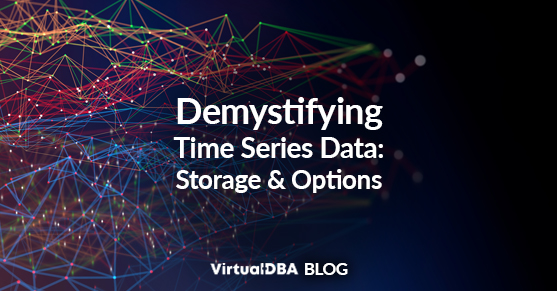The world runs on data, and timeseries data is crucial for understanding change. But what exactly is it, and why store it in a specialized format? Let’s explore the world of timeseries databases.
What is Timeseries Data?
Imagine a film strip capturing frames one after another. Timeseries data is like that film strip, but instead of visuals, it holds measurements or events recorded at specific points in time.
For instance, a temperature sensor collecting data every minute creates a timeseries. Each data point captures the temperature at that precise minute. This ordered sequence allows us to analyze trends, identify patterns, and make predictions.
Why Timeseries-Specific Storage?
Traditional relational databases, while powerful, need to be optimized for timeseries data. Here’s why storing timeseries data in a dedicated format is beneficial:
- Efficiency: Timeseries data is typically high-volume and requires fast writes and reads for specific time ranges. Timeseries databases excel at these operations.
- Scalability: Traditional databases can struggle to handle growing datasets as data accumulates over time. Timeseries databases are designed to handle growing datasets efficiently.
- Functionality: Timeseries databases offer built-in features for time-based queries, aggregations, and visualizations, simplifying analysis.
TimeSeries Database Options
Here’s a breakdown of a few options:
- TimescaleDB (with PostgreSQL): This open-source extension seamlessly integrates with PostgreSQL, leveraging its strengths while adding timeseries capabilities.
- IBM Informix TimeSeries Solution: IBM’s Informix Solution offers a robust option for managing timeseries data within the Informix environment.
- InfluxDB TimeSeries Data Platform: This popular open-source option boasts a strong community and focuses specifically on timeseries data.
- Prometheus: Another open-source favorite, Prometheus excels at collecting and storing timeseries metrics data, making it ideal for monitoring applications.
- Cassandra: This NoSQL database offers high scalability and fault tolerance, making it a good fit for large timeseries datasets.
Choosing a suitable database depends on your specific needs. Consider factors like data volume, query complexity, scalability requirements, and budget.
Conclusion
Timeseries data is a powerful tool for understanding change. Storing it in a dedicated format, like a timeseries database, unlocks its true potential. With various options available, you can choose the one that best suits your project’s needs. So, remember the power of timeseries databases next time you have data measured over time!
For more information, please contact us.

